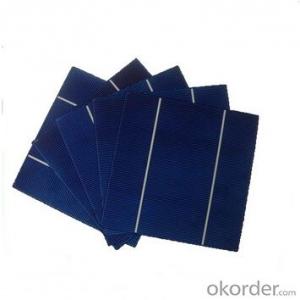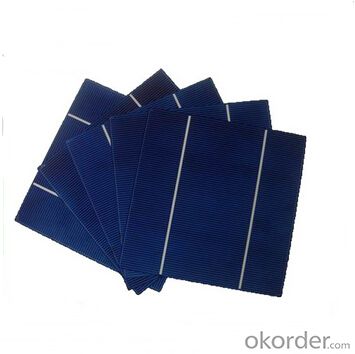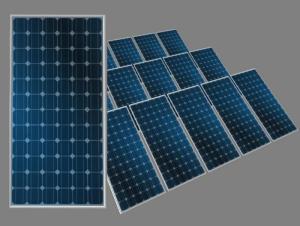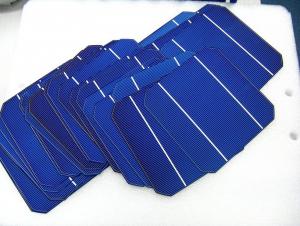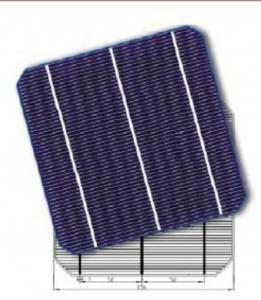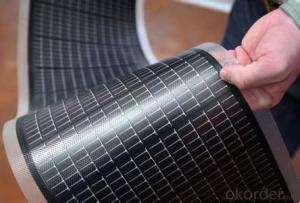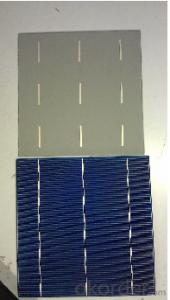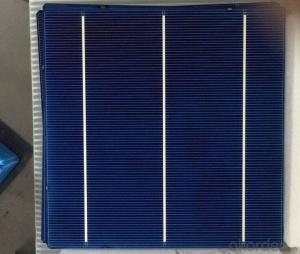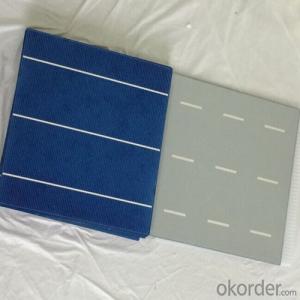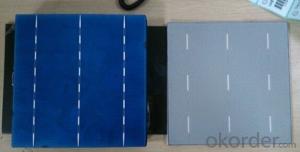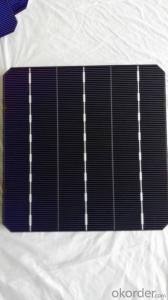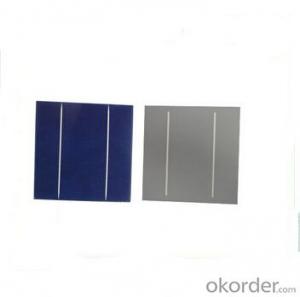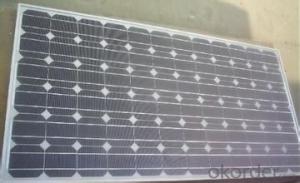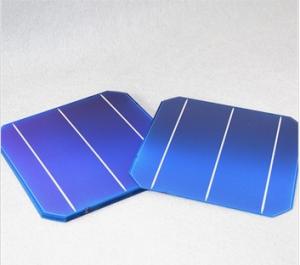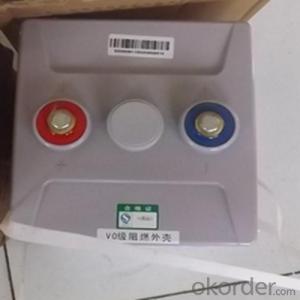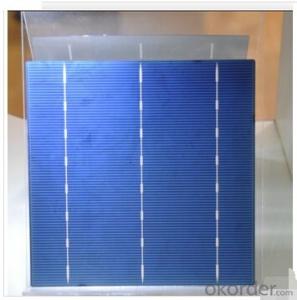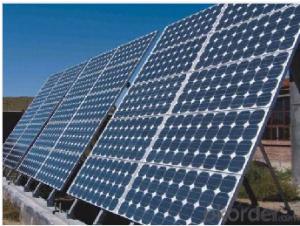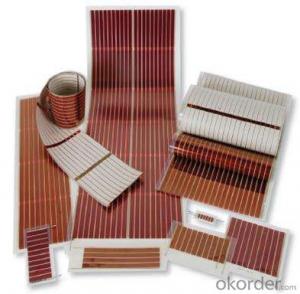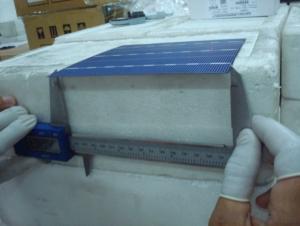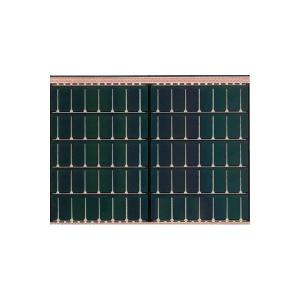High Quality Polycrystalline Silicon Solar Cells 156mmx156mm±0.5mm
- Loading Port:
- Shanghai
- Payment Terms:
- TT OR LC
- Min Order Qty:
- 1000 pc
- Supply Capability:
- 1000000 pc/month
OKorder Service Pledge
OKorder Financial Service
You Might Also Like
Solar Cells:
Solar cells is made by solar wafer, it has three categories of solar cell right now, monocrystalline polycrystalline and thin film,These cells are entirely based around the concept PN junction, which is the critical part of solar module, it is the part that can convert the light energy into electricity, the thickness is from 180um to 200um, with even busbars to conduct electricity, textured cell can decrease diffuse reflection; they are often electrically connected and encapsulated as a module. Photovoltaic modules often have a sheet of glass on the front (sun up) side, allowing light to pass while protecting semiconductor wafers from abrasion and impact due to wind-driven debris, rain, hail, etc. Solar cells are also usually connected in series in modules, creating an additive voltage. Connecting cells in parallel will yield a higher current;With high quality and stable quality. Our Cells can greatly improve the performance of Solar Modules.
Features:
1. High conversion efficiencies resulting in superior power output performance.
2. Outstanding power output even in low light or high temperature conditions
3. Optimized design for ease of soldering and lamination
4. Long-term stability, reliability and performance
5. Low breakage rate
6. Color uniformity
Solar Cells Advantage:
• High efficiency and stable performance in photovoltaic conversion.
• Advanced diffusion technique ensuring the homogeneity of energy conversion efficiency of the cell.
• Advanced PECVD film forming, providing a dark blue silicon nitride anti-reflection film of homogenous color and attractive appearance.
• High quality metal paste for back surface and electrode, ensuring good conductivity, high pulling strength and ease of soldering.
• High precision patterning using screen printing, ensuring accurate busbar location for ease with automatic soldering a laser cutting.
Specifications:
Dimension | 156mmx156mm±0.5mm |
Thickness(Si) | 180µm ±20µm, 200µm±20µm |
Front | Blue silicon nitride anti-reflective coatings 1.4mm silver busbar |
Back | Full-surface aluminum back-surface field 2.5mm(silver/aluminum discontinuous soldering pads |
Features | |
> High conversion efficiences resulting in superior power output performance | |
> Outstanding power output even in low light or high temperature conditions | |
> Optimized design for ease of soldering and lamination | |
> Long-term stability,reliability and performance | |
> Low breakage rate | |
> Color uniformity | |
Production and Quality Control | |
> Precision cell efficiency soring procedures | |
> Stringent criteria for color uniformity and appearance | |
> Reverse current and shunt resistance screening | |
> REACH-SVHC test passed, IS09001,ISO14001 and OHSAS 18001certificated | |
> Calibrated against Fraunhofer ISE | |
Packaging & Delivery of Solar Cells
Carton Box Package and Deliver by air. It should be noticed that it should be avoid of water, sunshine and moist.
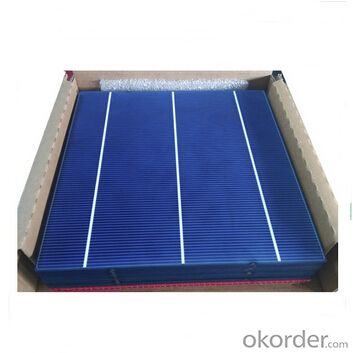
FAQ
We have organized several common questions for our clients,may help you sincerely:
①What price for each watt?
It depends on the efficiency of the solar cell, quantity, delivery date and payment terms.
②How long can we receive the product after purchase?
In the purchase of product within three working days, We will arrange the factory delivery as soon as possible. The pecific time of receiving is related to the state and position of customers.Commonly 7 to 10 working days can be served.
③Can you provide the peripheral products of the solar panels, such as the battery, controller, and inverter? If so, can you tell me how do they match each other?
Yes, we can, we have two companies for solar region, one is CNBM International, the other is CNBM engineering Co.
We can provide you not only the solar module but also the off grid solar system, we can also provide you service with on grid plant.
④What is your warranty of solar cell?
Our product can promise lower than 0.3% open box crack, we support claim after opening the box if it has crackm color difference or sth, the buyer should give pictures immediately, we can not accept the claim after the solar cell has assembled to solar panel.
• Timeliness of delivery
• ⑤How do you pack your products?
We have rich experience on how to pack the solar cell to make sure the safety on shipment, we could use wooden box or pallet as buyer's preference.
- Q: Can solar cells be used to power medical devices or implants?
- Yes, solar cells can be used to power medical devices or implants. They provide a sustainable and renewable source of energy, allowing these devices to operate without the need for frequent battery replacements or external power sources. Additionally, solar cells can be integrated into the design of medical implants, providing a self-sustaining power supply for long-term usage.
- Q: How do solar cells handle electrical surges or lightning strikes?
- Solar cells have built-in protective measures to handle electrical surges or lightning strikes. They are typically equipped with surge protectors or arresters that divert the excess electrical energy away from the cells, ensuring their safety. These protective devices help prevent damage to the solar cells and the overall system by redirecting the high voltage and current caused by surges or lightning strikes to the ground.
- Q: Can solar cells be used to power satellites?
- Yes, solar cells can be used to power satellites. In fact, they are the primary source of power for most satellites in space. Solar cells convert sunlight into electricity, which is then used to power the satellite's systems and equipment.
- Q: My son is very interested in solar cells recently, and keeps asking me about the structure of a solar cell. Can anybody help me answer that question?
- As a newly-developed power generation technology, solar cells are considered to be an evironmental-protecting green energy
- Q: Are solar cells affected by electromagnetic radiation?
- Yes, solar cells are indeed affected by electromagnetic radiation. They are designed to convert sunlight, which is a form of electromagnetic radiation, into electricity.
- Q: How do solar cells handle power quality issues?
- Solar cells do not directly handle power quality issues. However, inverters are used in solar power systems to convert the direct current (DC) generated by solar cells into alternating current (AC) that can be used in homes and businesses. These inverters often have built-in features to address power quality issues such as voltage fluctuations, harmonic distortions, and frequency variations. Additionally, grid-tied solar systems can rely on the electrical grid itself to handle power quality issues, as any excess power generated by solar cells can be fed back into the grid, ensuring a stable and reliable power supply.
- Q: What materials are commonly used to make solar cells?
- Silicon is the most commonly used material for making solar cells. Other materials, such as cadmium telluride, copper indium gallium selenide, and perovskite, are also used in certain types of solar cells.
- Q: What is the impact of leaf litter on solar cell performance?
- Leaf litter can have a negative impact on solar cell performance as it can block sunlight from reaching the cells, reducing their efficiency. Additionally, if the litter accumulates and covers the cells, it can hinder their ability to convert light into electricity. Regular cleaning and maintenance are essential to ensure optimal solar cell performance.
- Q: Can solar cells be used for powering electronics?
- Yes, solar cells can be used to power electronics. Solar cells convert sunlight into electricity, which can be used to power a wide range of electronic devices, from small gadgets like smartphones and calculators to larger appliances like laptops and even homes.
- Q: How do solar cells perform in areas with extreme temperature fluctuations?
- Solar cells typically perform well in areas with extreme temperature fluctuations. However, excessive heat can slightly reduce their efficiency, while extreme cold can temporarily decrease their power output. Nonetheless, solar cells are designed to withstand a wide range of temperatures, and advancements in technology have improved their performance and durability in extreme weather conditions.
Send your message to us
High Quality Polycrystalline Silicon Solar Cells 156mmx156mm±0.5mm
- Loading Port:
- Shanghai
- Payment Terms:
- TT OR LC
- Min Order Qty:
- 1000 pc
- Supply Capability:
- 1000000 pc/month
OKorder Service Pledge
OKorder Financial Service
Similar products
Hot products
Hot Searches
Related keywords
